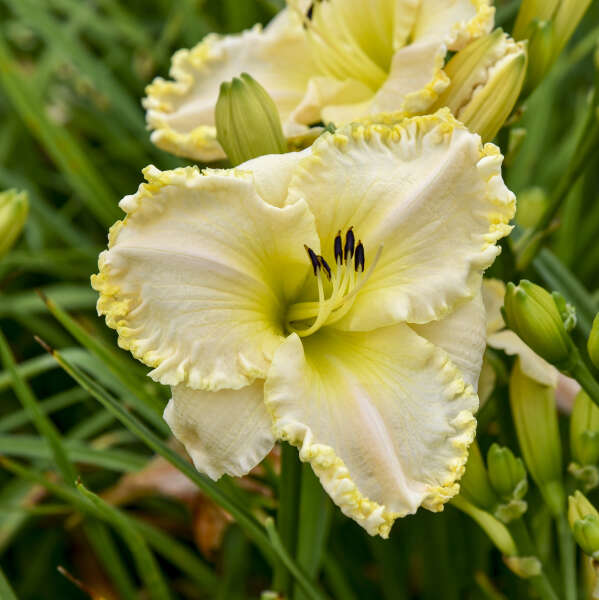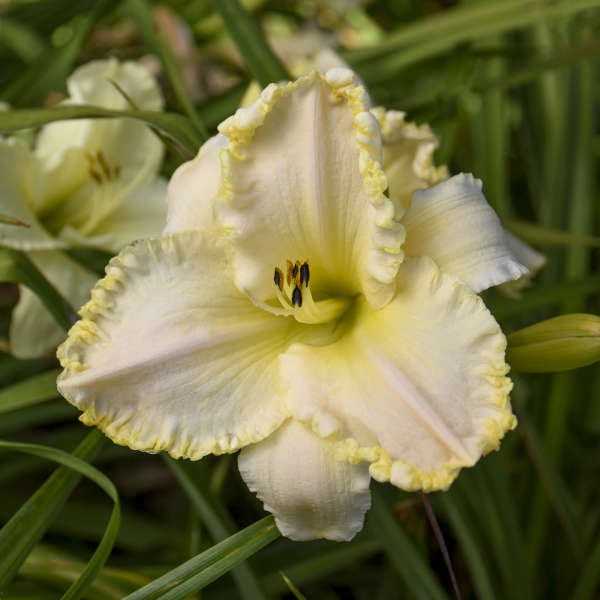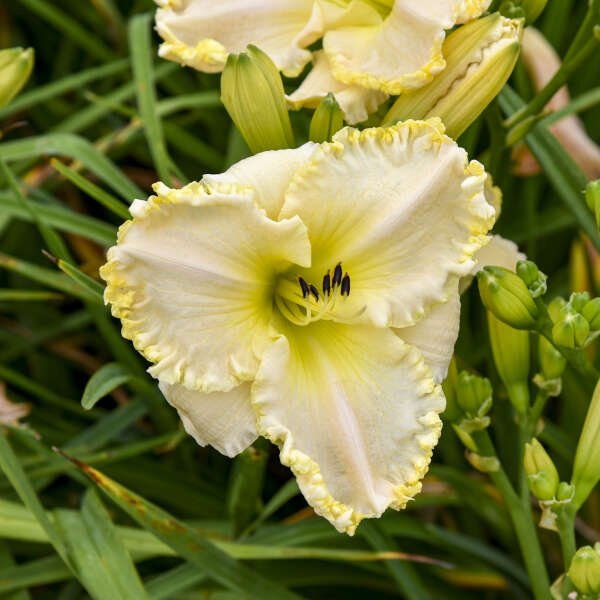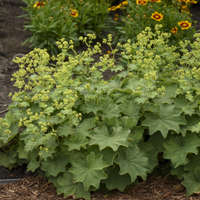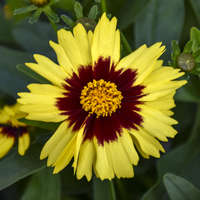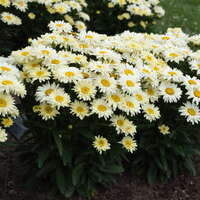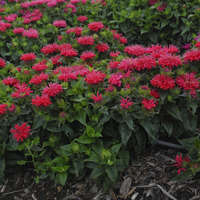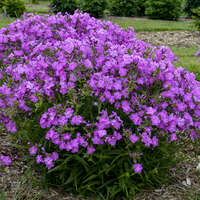Hemerocallis 'Marquee Moon'
Common Name: Daylily
‘Marquee Moon’ sets the new standard for white daylilies as its form is greatly improved. Extravagant ruffling unlike any other lends a fancy, elegant look to the blossoms. The large 5-5½", fragrant, cream colored blossoms have a yellow throat that radiates softly out onto the petals. This yellow coloring is repeated on the picotee edge around each rounded petal. On cloudy days, you can detect a hint of peach color in the flower, and on sunny days you can see the diamond dust sparkling on the petals.
This is a heavily budded daylily that can produce an incredible 40 buds per scape. It forms a compact clump of narrow, arching foliage topped with large flowers in midsummer.
Daylilies can survive many harsh conditions that other plants cannot including: polluted city environments, slopes, poor and dry soils, near pavement that is salted in winter, and under Black Walnut trees (not affected by juglone).
Characteristics (Compared to Other Daylilies)
- Late Midseason Bloomer, blooming in late July.
- Fragrant flowers.
- Dormant foliage.
- Tetraploid with 44 chromosomes, twice as many as Diploids. Tetraploids tend to be bigger, stronger plants.
